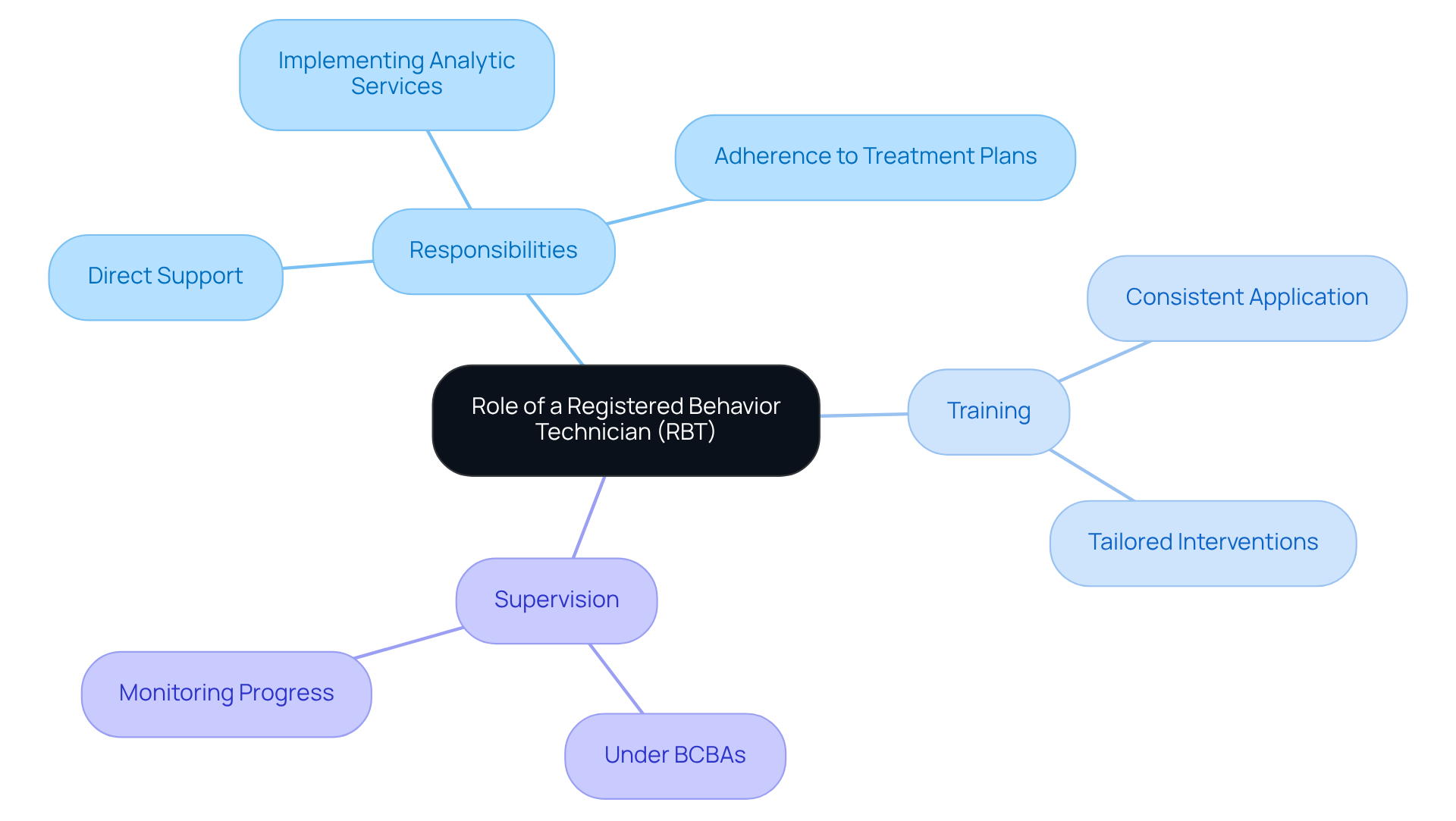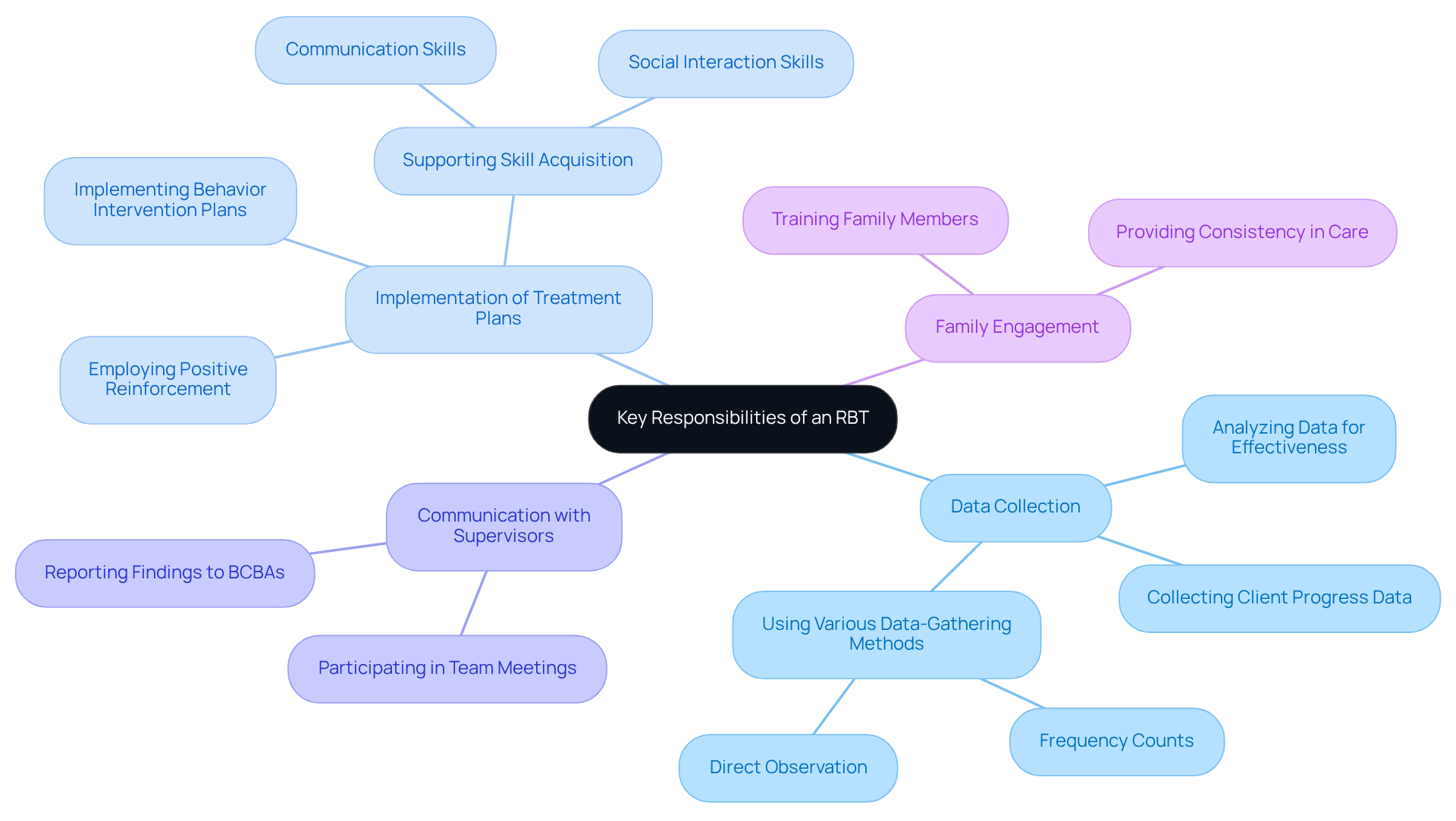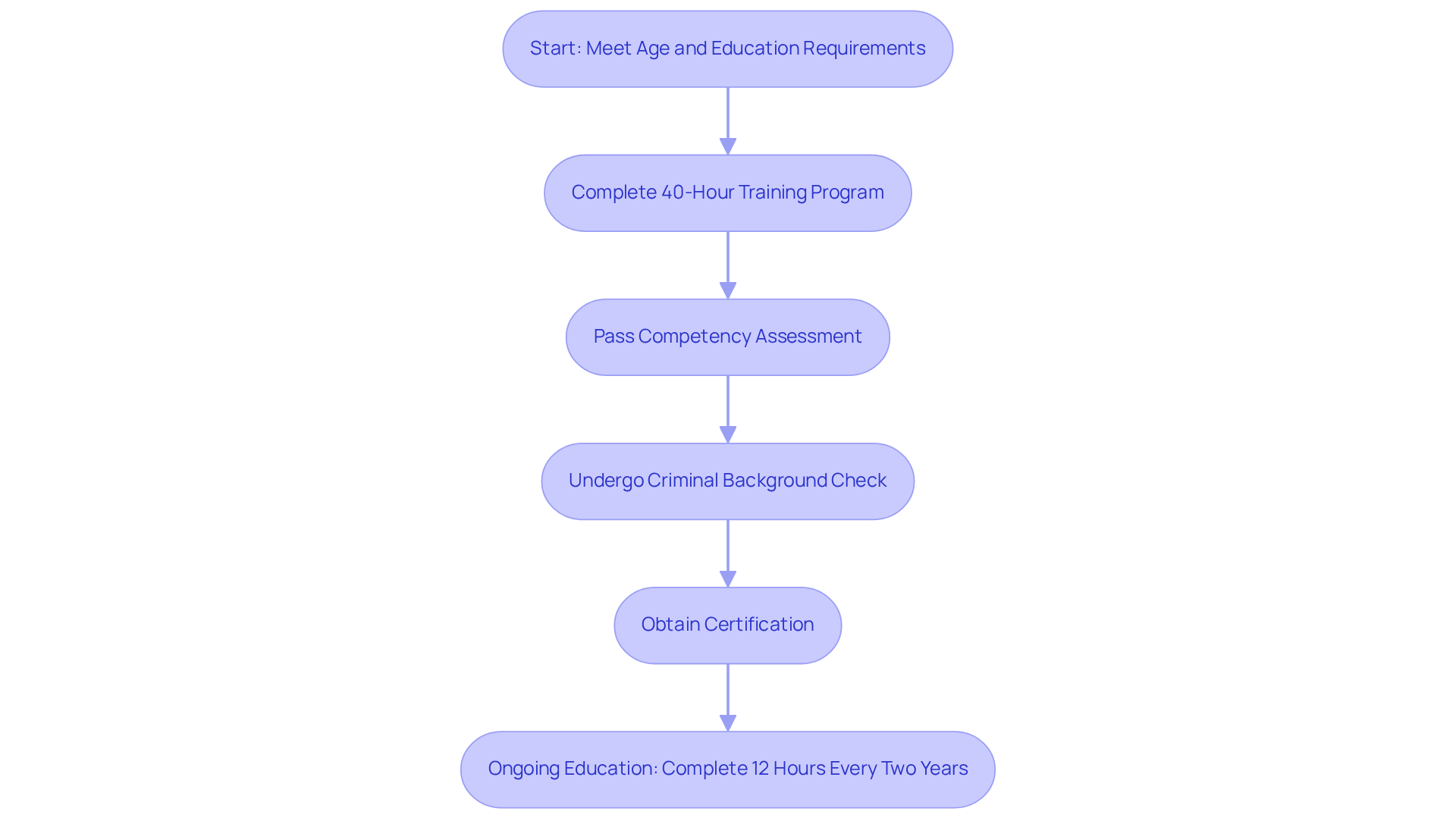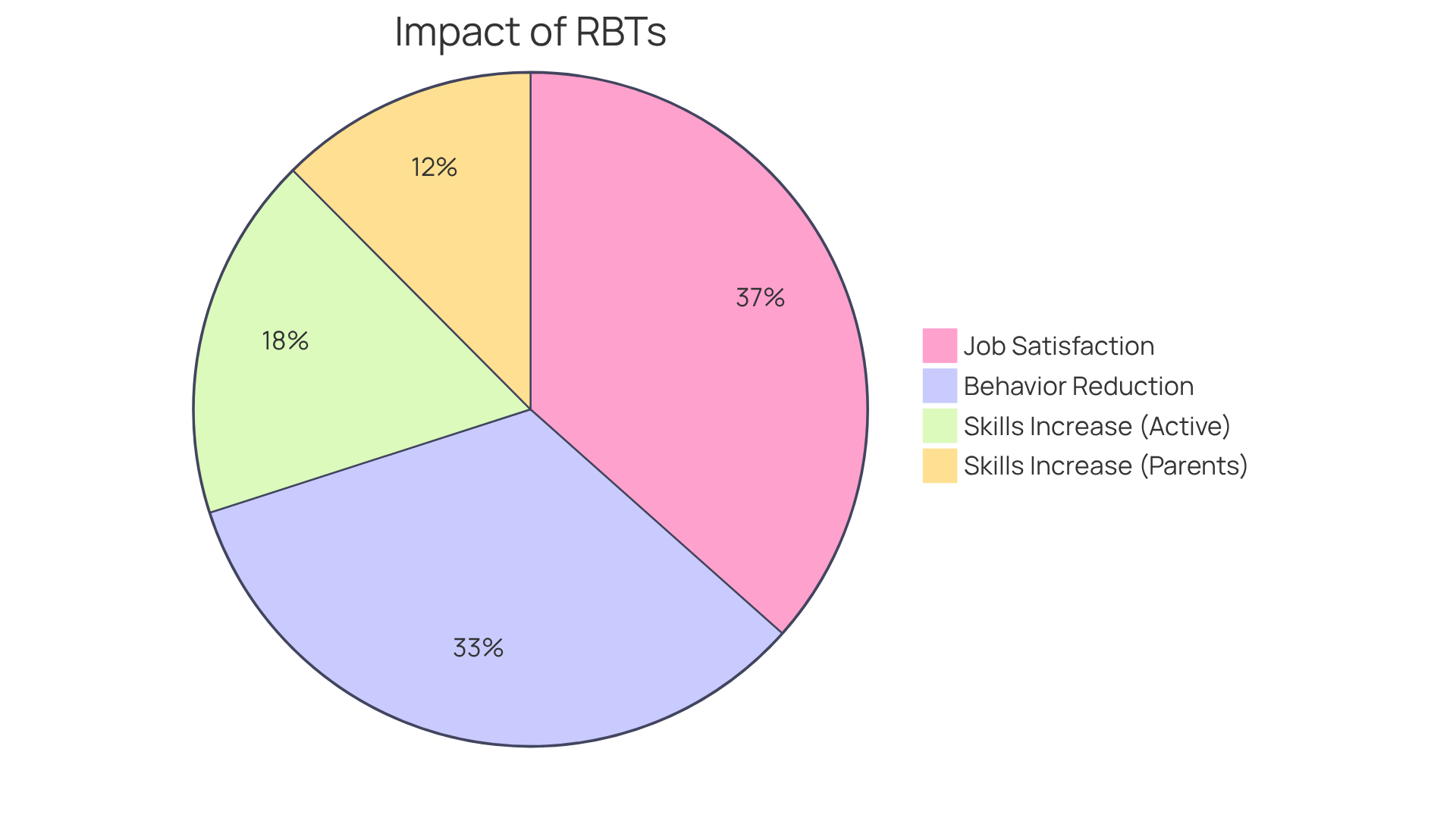October 22, 2025

The Registered Behavior Technician (RBT) role is indispensable in delivering direct support to individuals, especially those with autism spectrum disorder. RBTs implement personalized treatment plans under the supervision of Board Certified Behavior Analysts (BCBAs), ensuring that each client's unique needs are met. This role is not merely supportive; it is foundational to the success of therapeutic interventions.
RBTs are tasked with:
These responsibilities underscore their critical position in the field of Applied Behavior Analysis (ABA), where data-driven decisions can significantly enhance therapeutic outcomes.
As the demand for qualified BCBAs continues to rise, the need for skilled RBTs becomes even more pressing. Are you facing challenges in recruiting the right talent for your ABA practice? Consider how platforms like Hire ABA can streamline your hiring process, ensuring you find the best candidates to support your clients effectively.
In conclusion, the role of RBTs is vital in the landscape of ABA, and leveraging effective recruitment strategies is essential for maintaining high standards of care. By recognizing the importance of RBTs and utilizing reliable recruitment solutions, you can enhance the quality of support provided to individuals with autism spectrum disorder.
Understanding the intricacies of the Registered Behavior Technician (RBT) role reveals a crucial component of effective behavioral therapy, particularly for individuals with autism spectrum disorder. The demand for these skilled professionals is surging, highlighting the necessity for clarity regarding their responsibilities and qualifications.
What challenges arise in ensuring a consistent supply of qualified RBTs?
How can organizations effectively navigate this landscape to enhance the quality of care?
These questions are essential as we explore the evolving needs in this field.
A Registered Behavior Technician job description includes being a paraprofessional who provides direct support to individuals facing conduct challenges, particularly those with autism spectrum disorder. These technicians operate under the supervision of Board Certified Analysts (BCBAs) and are responsible for implementing analytic services. Their role is essential in delivering individualized therapy, as outlined in the registered behavior technician job description, which is a fundamental principle of Applied Behavior Analysis (ABA).
RBTs are meticulously trained to adhere to specific treatment plans crafted by BCBAs, ensuring that interventions are applied consistently and effectively.

The registered behavior technician job description highlights the vital role that Registered Behavior Technicians (RBTs) play in executing personalized treatment plans tailored to meet the specific needs of individuals. With over 100,000 certified professionals in the United States as of 2025, the demand for RBTs continues to rise. According to the registered behavior technician job description, their primary responsibilities include:
In their daily interactions, RBTs utilize strategies like positive reinforcement to encourage desired behaviors, fostering an environment conducive to learning and growth. For instance, an RBT might implement a behavior intervention plan that focuses on enhancing a child's communication skills by rewarding verbal attempts with praise or small incentives. This approach not only supports the child's development but also instills confidence in their abilities.
Furthermore, the registered behavior technician job description frequently involves:
This collaboration is crucial for refining treatment strategies and ensuring that clients receive the most effective support. Are you facing challenges in hiring qualified RBTs? Consider how platforms like Hire ABA can streamline your recruitment process.
The registered behavior technician job description includes interacting with family members and caregivers to provide training on how to reinforce therapeutic techniques at home. This involvement not only enhances the consistency of care but also empowers families to support their loved ones' development effectively. The ongoing professional development of RBTs ensures they remain current with best practices and ethical standards, significantly contributing to the positive outcomes observed in clients.
Despite the increasing demand, there remains a significant shortage of RBTs compared to the number of children with Autism Spectrum Disorder (ASD), highlighting the critical need for improved access to ABA services. RBTs' adherence to the Professional and Ethical Compliance Code for Analysts further reinforces their role as essential members of the ABA community. By prioritizing the recruitment of skilled RBTs, you can enhance the quality of care provided to clients and ensure their success.

To meet the registered behavior technician job description, candidates must be at least 18 years old and possess a high school diploma or equivalent. They are required to complete a 40-hour training program, which consists of 38 organized hours and 2 optional hours, focusing on the principles of Applied Behavior Analysis (ABA) and ethical considerations in practice. This training encompasses structured hours dedicated to essential topics, including:
This ensures a comprehensive educational experience.
Upon finishing the training, candidates must pass a competency assessment and undergo a criminal background check to obtain certification from the Behavior Analyst Certification Board (BACB). Starting in 2026, newly certified or recertified behavior technicians will also be required to complete 12 hours of professional development during their two-year renewal cycle. This emphasis on continuous education highlights the importance of staying current with industry standards to maintain certification.
Recent updates to the RBT training requirements emphasize a commitment to enhancing the quality of behavior analytic services, as outlined in the registered behavior technician job description. The new curriculum mandates specific time allocations for various training components, including behavior-change interventions and data collection. Organizations are encouraged to review their training programs to ensure compliance with these evolving standards, which aim to strengthen the foundation of behavior analytic services.
Successful pathways to RBT certification have been documented through various case studies, which highlight the effectiveness of structured training programs as specified in the registered behavior technician job description. These programs not only prepare candidates for the certification process but also equip them with the skills necessary for effective practice in the field. As the demand for qualified behavior technicians continues to rise, understanding these requirements is essential for healthcare employers seeking to build skilled teams in ABA therapy.

Certified Technicians are essential to the success of Applied Analysis therapy, providing reliable, practical support that directly impacts outcomes for individuals. Their daily interactions facilitate the immediate application of behavioral strategies, crucial for skill acquisition and behavior modification. By bridging the gap between theoretical understanding and practical application, behavior technicians ensure that treatment plans are executed efficiently, resulting in significant enhancements in individual behavior and participation.
Statistics reveal that:
Moreover, the registered behavior technician job description highlights their pivotal role in cultivating a supportive environment for clients, enhancing overall satisfaction for families involved in the therapy process. Research indicates that:
This highlights the collaborative nature of effective ABA therapy. Additionally, the registered behavior technician job description highlights that these professionals earn an average wage of around $24 per hour, reflecting the competitive job market and the value of their contributions in the field.
As the demand for ABA therapists is projected to rise by 22% from 2018 to 2028, the registered behavior technician job description is becoming increasingly vital in meeting this need. They also face challenges when working with individuals who do not communicate verbally, requiring them to focus on non-verbal signals of comfort and engagement. By embedding learning opportunities within preferred activities and maintaining a high ratio of positive interactions, RBTs not only improve therapeutic outcomes but also contribute to a more rewarding experience for clients and their families.

The demand for qualified behavior technicians is soaring, highlighting the critical role Registered Behavior Technicians (RBTs) play in Applied Behavior Analysis (ABA). RBTs serve as the frontline support for individuals, particularly those with autism spectrum disorder. Their responsibilities encompass implementing treatment plans crafted by Board Certified Behavior Analysts (BCBAs), collecting and analyzing data on client progress, and fostering an environment conducive to learning through positive reinforcement. This structured approach not only enhances the effectiveness of interventions but also ensures that clients receive personalized care tailored to their unique needs.
Key points emphasize the essential qualifications and training RBTs must undergo, such as:
The increasing demand for RBTs is underscored by the significant shortage of qualified professionals relative to the number of children requiring ABA services. How can organizations address this gap? The collaboration between RBTs and families is a vital component in reinforcing therapeutic techniques, ultimately leading to improved outcomes for clients.
The significance of RBTs extends beyond their immediate responsibilities; they are integral to the success of ABA therapy. By bridging the gap between theory and practice, RBTs facilitate skill acquisition and behavior modification while contributing to a supportive environment for clients and their families. As the demand for qualified behavior technicians continues to rise, prioritizing their recruitment and training is essential for enhancing the quality of care in ABA services. Embracing this commitment will not only benefit individuals in therapy but will also foster a more effective and compassionate approach to behavioral health care.
What is the primary role of a Registered Behavior Technician (RBT)?
The primary role of a Registered Behavior Technician is to provide direct support to individuals facing conduct challenges, particularly those with autism spectrum disorder, under the supervision of Board Certified Analysts (BCBAs).
Who supervises Registered Behavior Technicians?
Registered Behavior Technicians operate under the supervision of Board Certified Analysts (BCBAs).
What are RBTs responsible for in their job?
RBTs are responsible for implementing analytic services and delivering individualized therapy as outlined in treatment plans created by BCBAs.
What is the significance of the training RBTs receive?
RBTs are meticulously trained to adhere to specific treatment plans, ensuring that interventions are applied consistently and effectively, which is a fundamental principle of Applied Behavior Analysis (ABA).
Our expert recruitment strategies and AI-driven sourcing ensure that you receive top-notch candidates quickly, without compromising on quality. Whether you’re looking for BCBAs, Clinical Directors, or RBTs, we’ve got you covered.